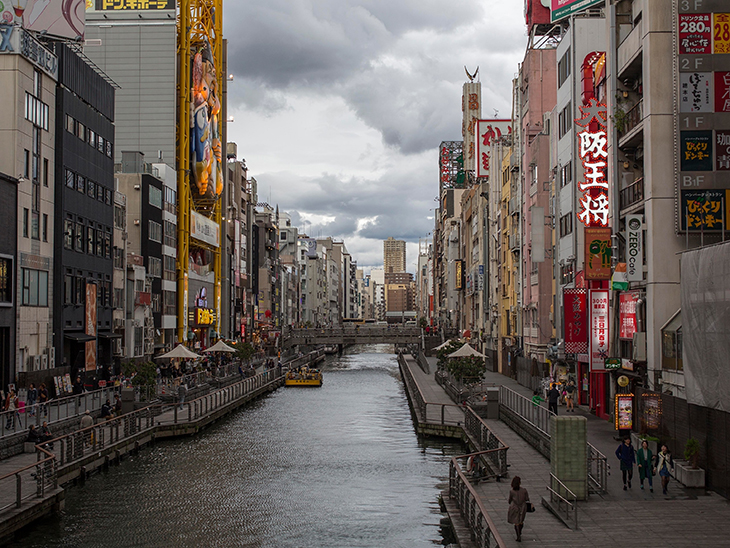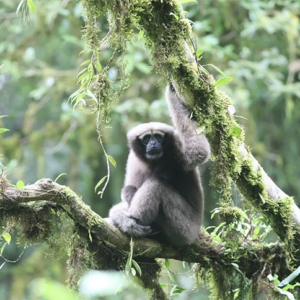
Beneath the glitzy facade of Dotonbori River, a bustling waterway adorned with neon-lit advertising boards, lies a murky reality: its water quality likened to that of a “toilet bowl.” However, amidst this urban chaos dwells a surprising inhabitant—a resilient population of Japanese eels (Anguilla japonica), thriving despite the environmental challenges.
In a groundbreaking effort to uncover the secrets of this enigmatic ecosystem, the Mainichi, Japan’s oldest English daily paper, joined forces with the Research Institute of Environment, Agriculture, and Fisheries in Osaka Prefecture. Their collaborative study delved into the eel population inhabiting the Dotonbori River, shedding light on a previously overlooked aspect of urban biodiversity.
The results were astonishing. For the first time under scientific observation, researchers managed to capture 11 Japanese eels from the river’s depths. This discovery marks a significant milestone in understanding the ecological dynamics of Dotonbori River and its unexpected inhabitants.
Among the captured eels, three now find sanctuary at the Osaka Biodiversity Research Center, serving as ambassadors for their species. Through educational initiatives, these eels symbolize the intrinsic value of the river’s ecosystem, encouraging locals to appreciate the “treasures of the sea” that dwell within their city’s waterways.
“The institute says the study confirmed that crabs and other creatures the eels feed on also live in the river, making it a full-fledged ecosystem,” The Mainichi reported.
DNA analysis conducted on a selection of apprehended eels revealed compelling evidence suggesting their migration from the seas surrounding Osaka into the river system.
The Dotonbori, once plagued by pollution during the extensive economic development following the war, witnessed a significant turnaround in the 1980s with the implementation of sluice gates, leading to notable improvements in its environmental condition.
Flowing through the vibrant Minami Entertainment District, the beating heart of urban life in Osaka, the river serves as a focal point for both locals and tourists alike. Interestingly, the eels were captured a mere quarter-mile from the iconic Ebisu Bridge, renowned as a popular tourist attraction and the customary site for post-victory celebrations of the Hanshin Tigers, Osaka’s beloved baseball team.
This research underscores the remarkable adaptability of wildlife even within highly urbanized environments. The researchers behind the study express hopes that the findings will instill a deeper appreciation among enthusiasts of unagi, the beloved grilled eel delicacy, urging them to take a more proactive stance in preserving the habitats—both urban and rural—necessary for the survival of this national culinary treasure.
“I’d like people to learn more about the connection between our daily lives and the places we live in,” Yoshihiko Yamamoto, the lead researcher of the institute, said to National Geographic. “If people think that eels and other aquatic creatures may be living in their local rivers, they will become interested in biodiversity and conservation.”
In 2014, the International Union for the Conservation of Nature (IUCN) designated the A. japonica, a visually delightful species, as Endangered due to substantial declines in its population size and growth rates since the 1970s. Despite this classification, sightings, purchases, and captures of these creatures are not uncommon, as they continue to inhabit various regions across China and the Korean Peninsula.
Yamamoto and his team are advocating for governmental intervention to address the challenges facing A. japonica. Their proposal involves the installation of fish ladders, facilitating the migration of eels between the sea and rivers by enabling them to navigate past obstacles such as locks and gates. Additionally, they are implementing measures such as dropping baskets of rocks to create suitable habitat for the eels, ensuring their survival amidst the bustling environments of pachinko halls and restaurants. Through these concerted efforts, Yamamoto and his colleagues aim to bolster the conservation prospects of the A. japonica and mitigate the threats posed by human activities and habitat fragmentation.
What are your thoughts? Please comment below and share this news!
True Activist / Report a typo


